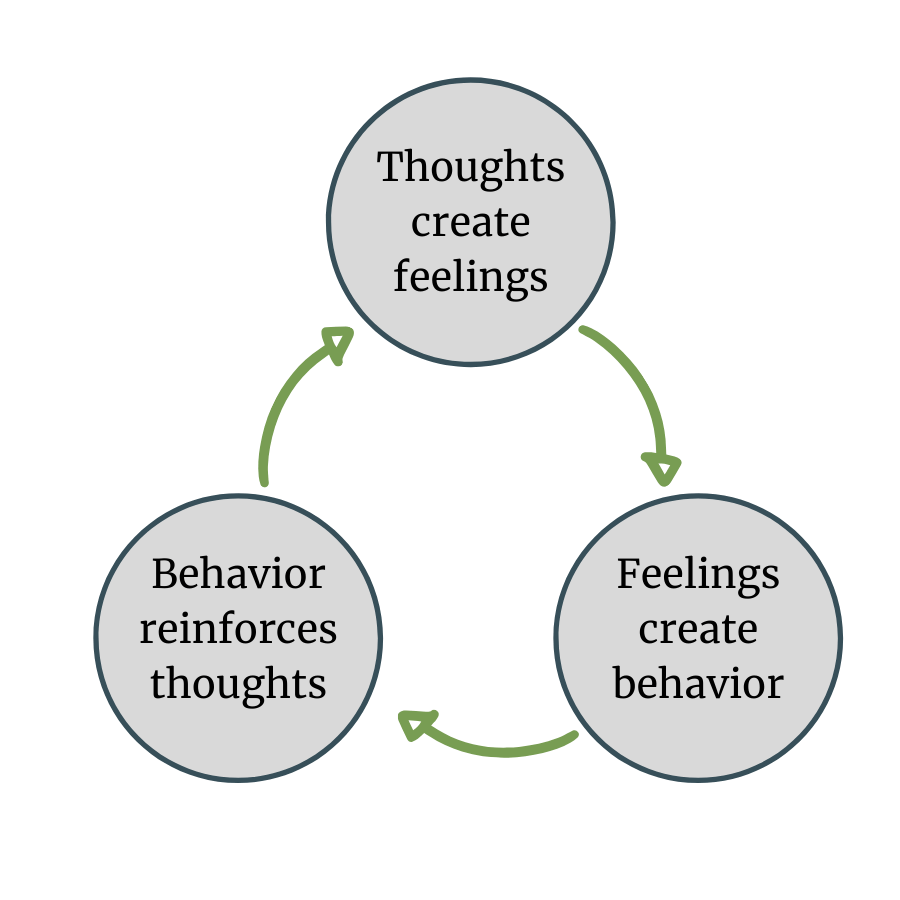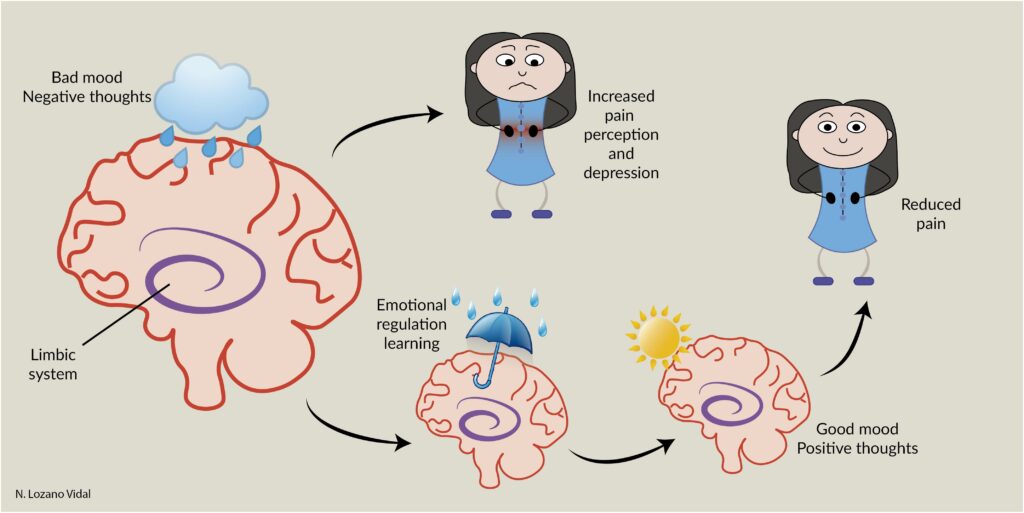Wondering about what Cognitive Behavioral Therapy is? And how it relates to pain? In this article, I intend to answer your questions. Because I have chronic pain, and I am hoping that Cognitive Behavioral Therapy can help me manage my pain. I hope it can help you as well.
What is Cognitive Behavioral Therapy?
First of all, let’s call it CBT for short, okay? (It’s easier to type.) CBT is defined in Wikipedia as working in the psychological and social area of mental health to change thinking (cognition) and responses (behavior) to cope with problems.
It is mostly used in treatment of anxiety and depression, but some work has been done in the area of pain management. Hence my interest in researching this topic.
If you are looking for pain relief, then CBT isn’t necessarily going to address this. The emphasis of CBT is to recognize negative or unhelpful thoughts and work toward directing the thoughts to productive and positive behavior.
My definition for CBT? A practice that helps me think in positive productive ways to influence my thoughts, feelings and actions.
I’ve heard and seen it illustrated like this:
Thoughts Feelings/Emotions
Beliefs
Behaviors
or in this illustration

Why Should I Try Cognitive Behavioral Therapy?
I search almost everyday for news about chronic pain and pain management. CBT has come into my radar a few times. Because it is not a drug based treatment, I was interested.
I don’t think of myself as depressed or anxious, even in relation to my pain. But I admit I do get discouraged and overwhelmed, and that is usually related to having a particularly painful day.
So even if this concept doesn’t help my pain, it may give me a better quality of life, or a better day instead of a day of discouragement. I know that feelings are influenced by thoughts; the more negative I think, the worse I feel. Making changes to my thinking should help me feel better.
Who Can Benefit from Cognitive Behavioral Therapy?
From my research, I found that the people that might benefit from this therapy are:
- People with average intelligence and not suffering from brain trauma or physiological issue
- People motivated to learn new coping skills
- People willing to work on changing their thought patterns
So here’s the deal. If I put in the work to change my thoughts, I should see a change in my feelings, and therefore feel better. I have read that negative, hopeless thinking can make a person feel worse. I don’t understand the psychology behind this, but I do know that focusing on the negatives never does me any good.
How Can It Help Me Manage My Pain?
The main thesis for this practice is that we can work on changing our response to pain. By doing so, we take charge of how we are going to live our life. Think of it this way; my chronic pain makes me hurt when I move. I can think, “I’m not going to move because it hurts.” Or if I want to change my thoughts, I can say, “I’m in pain, but I want to move to stay as healthy as possible.”

I know that’s simplified, but that is the basis. Studies show that a combination of CBT, physical therapy and other medical interventions will provide the best results. So where possible, find and work with a medical team that is willing to address the total person, and not just the pain.
This is a link to an article published in the National Institutes of Health that discussed evidence for the efficacy of this practice.
Where Can I Get Professional Help for CBT?
The recommendation for learning this practice is to contact your medical or mental health provider. My health provider has a mental health department. If yours does, then I recommend you contact them about this.
In fact, I was fortunate enough to be able to take a (virtual) pain management class. In this class, among other things, we were briefly acquainted with CBT. We were given a handout to learn to recognize “bad” thinking and to replace it with “healthier” ideas. This was really just skimming the surface.
There appear to be websites that claim to provide free counseling services, but when I click on them, they say they start at $40.00/hour. So I recommend you research where you can get the best treatment for this therapy. Try your health provider first.
Here is a worksheet that might help you get started. It’s from getselfhelp.co.uk. It is like the one I received from my pain management class. It is a simple tool to note your “stinking” thinking and move on to “healthy” thinking.
US Veterans can check out this link for information about CBT. In fact, the following video is from this link and I think it is helpful in understanding CBT.
Is There Something Else You Can Do?
I have further come to the conclusion that having a good friend to talk to about this is just about as helpful as a therapist. If you have someone in your life that is empathic and willing to listen, they can help you recognize bad thoughts and work toward good thoughts.
If you have someone like that, then have them help you with it. I believe you are practicing basic CBT. And you are very blessed to have such a person. So show them some love!
I watched a video that showed a therapist with a patient, and in my opinion the therapist was condescending and not very emphatic. (Or maybe she was just a bad actress.) Anyway, someone that loves you can certainly help with this practice.

Other practices I learned about in class were to recognize flare ups (worsening of the pain) and the cause. This helps to avoid flare ups in the future! It is helpful to note what you have been doing before you had a flare up. Then make plans accordingly.
One of the plans you can make is the practice of pacing. I wrote an article on this practice. Check it out.
Finally, I also practice distraction techniques. Building this website has been a wonderful project for me, because it provides regular distraction from my pain. I just have to be careful to get up every half hour so I don’t sit too long.
Final Thoughts
I am a Christian, and am cautious about psychology and the claims it makes. So I found a great article about Biblical counseling and CBT. If you have concerns as well, check this out from Biblicalcounseling.com.
Managing our pain takes work, and can at times, be exhausting. Having plans in place, like pacing and being mindful of our thoughts, can help in taking back some control in our lives. I hope this article has been helpful toward that end.
Let me know what you think, please. If you have questions leave them here. I will do my best to get back to you.
